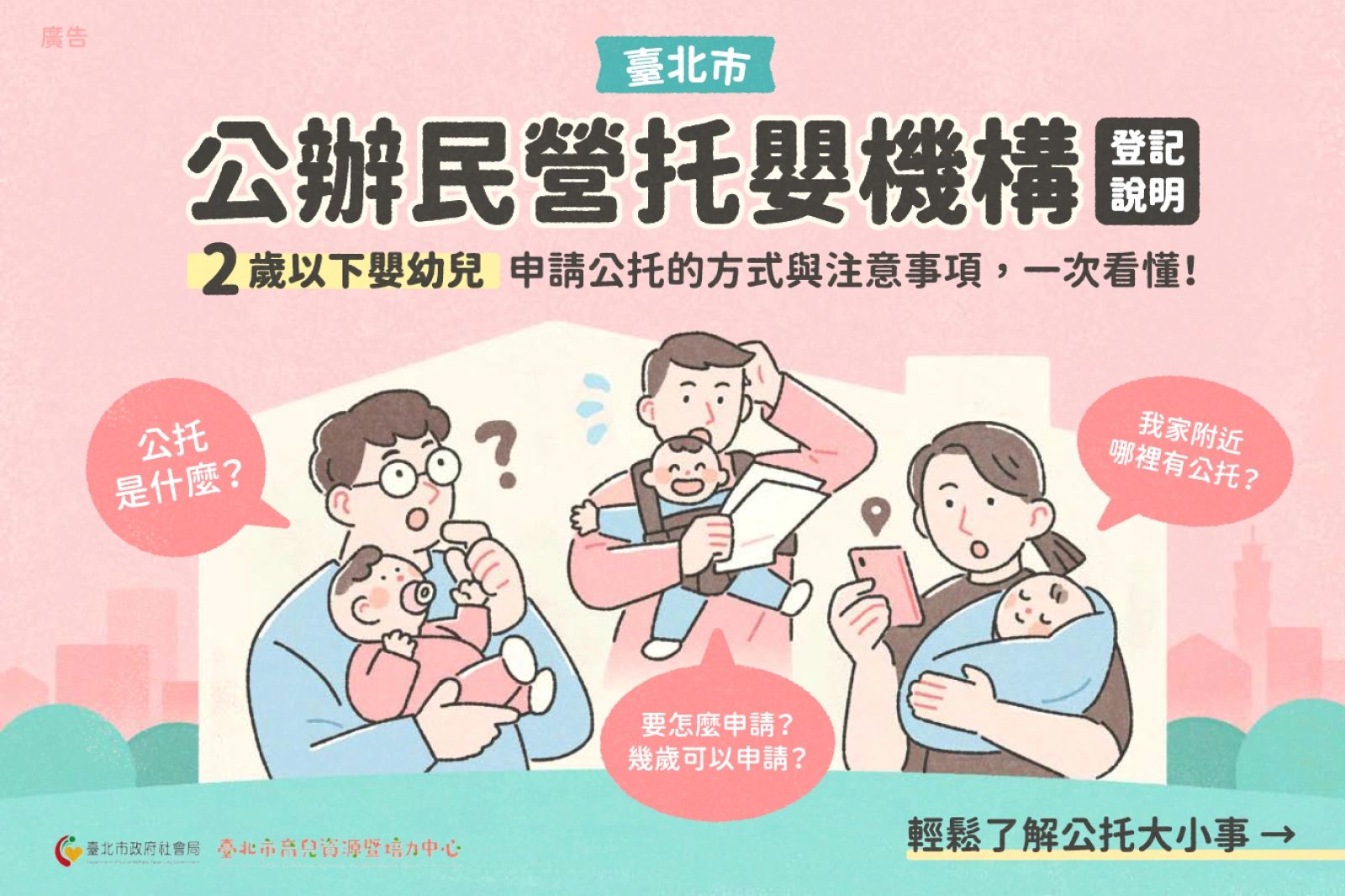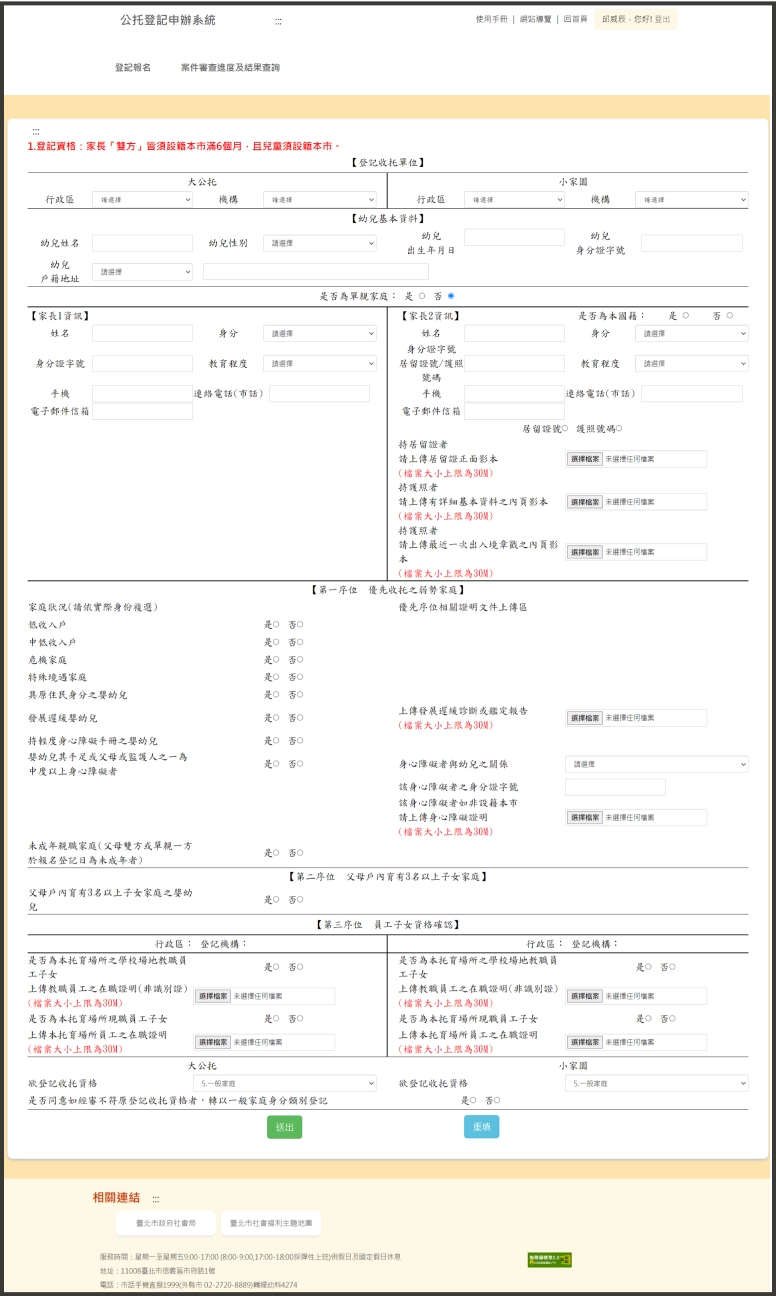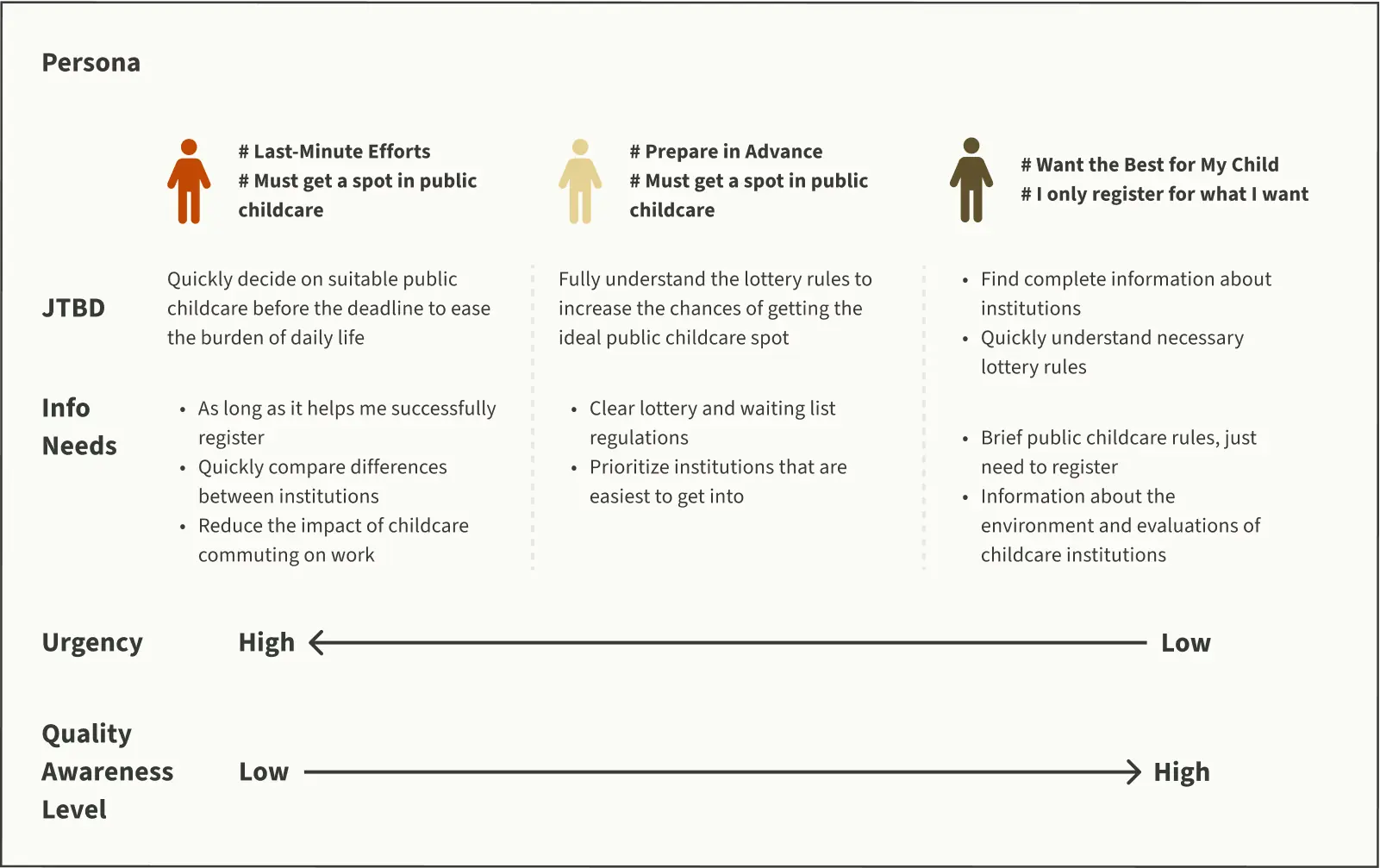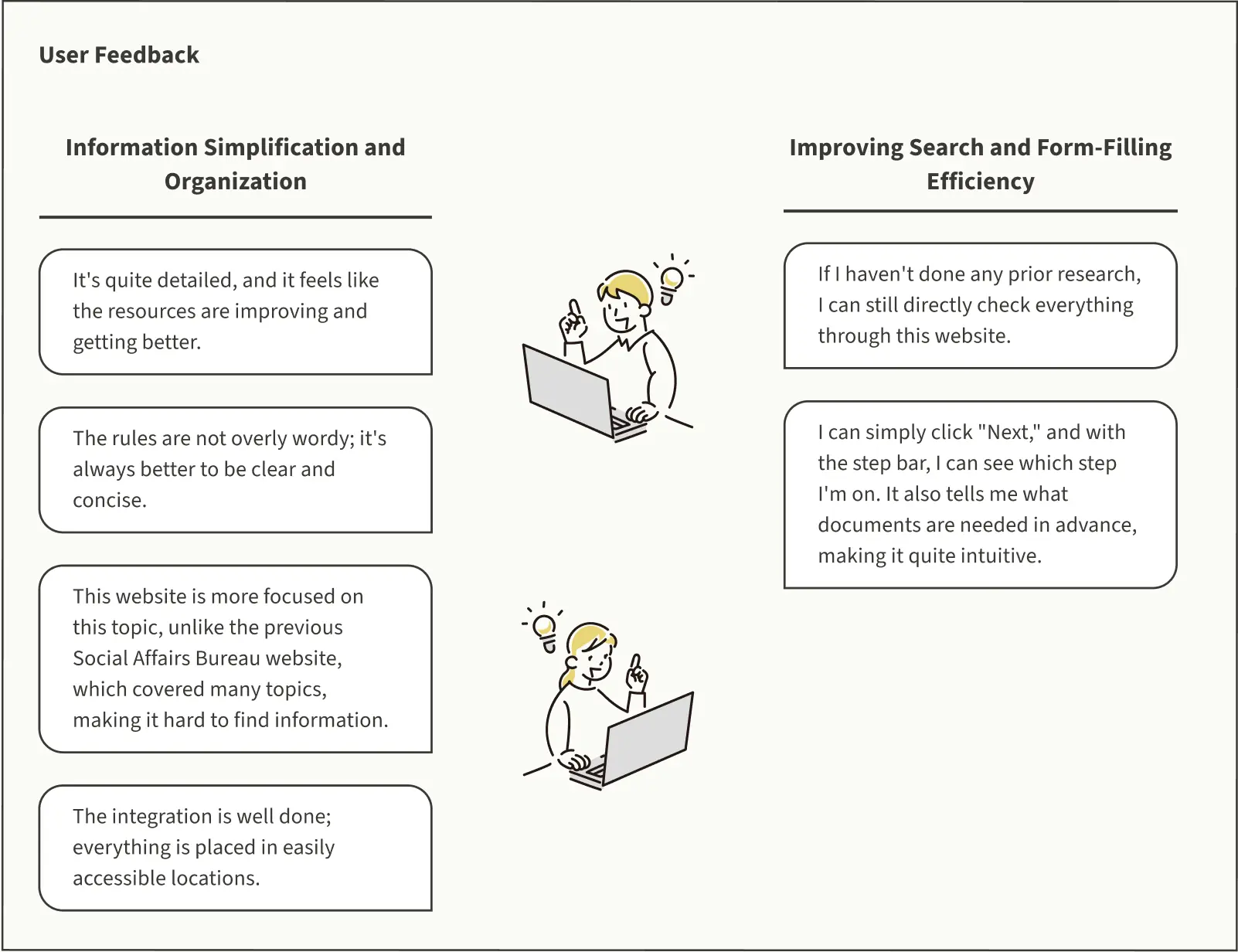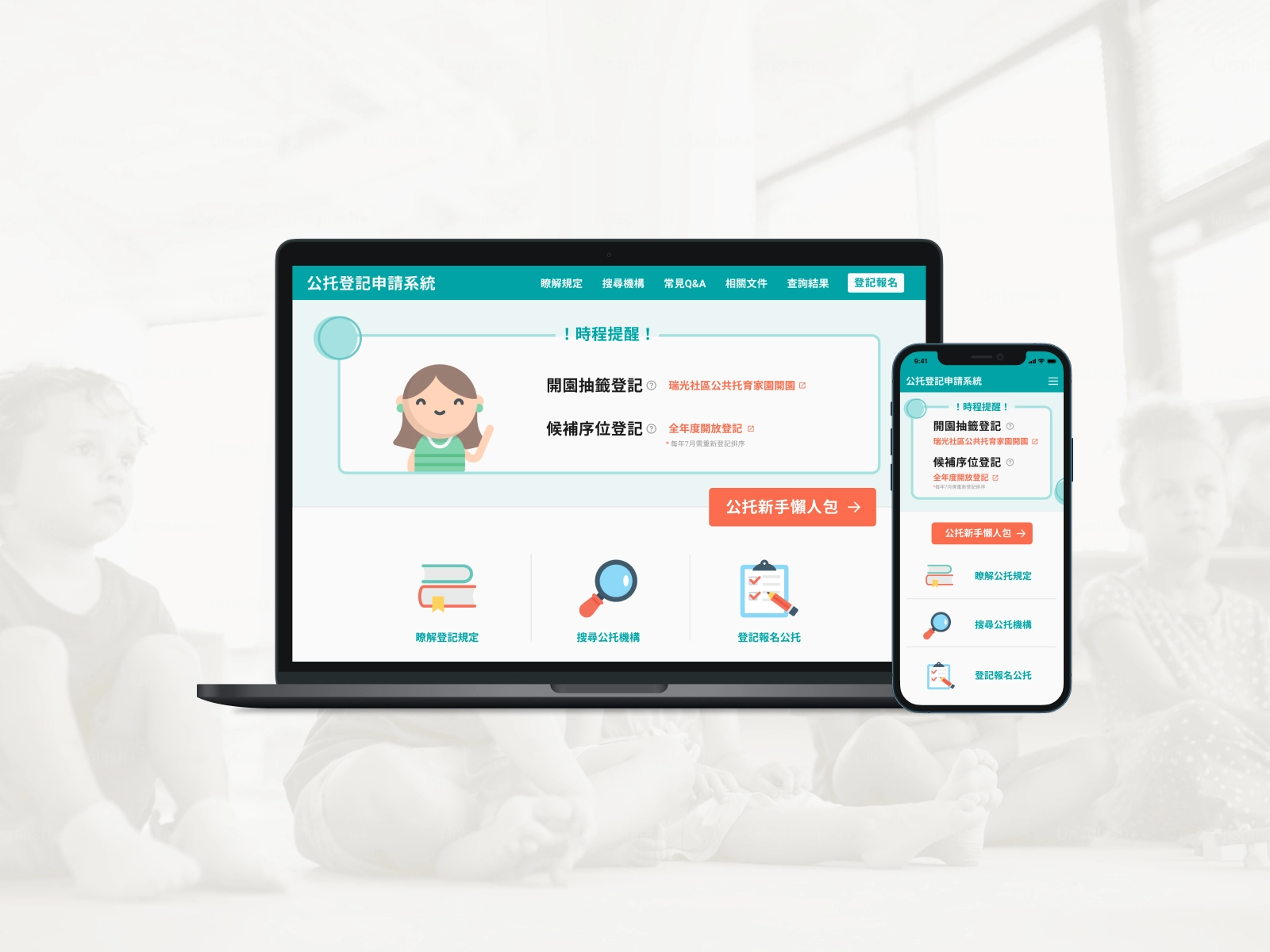
Purpose
Conducted user research and redesign for Taipei City's public childcare registration and lottery system, enabling citizens to complete all processes—such as understanding rules, searching for institutions, and registering—on a single platform.
Challenge
Persuading the government to adopt the proposal without a pre-allocated budget was a significant challenge.
Production
Completed usability testing, user interviews, wireframes, high-fidelity prototypes, and concept testing, ultimately delivering high-fidelity design files for government reference.
Outcome
Proposed three solutions of varying complexity for the government’s consideration. Two years after the project’s completion, a new user-friendly guide was successfully launched on the official website.
